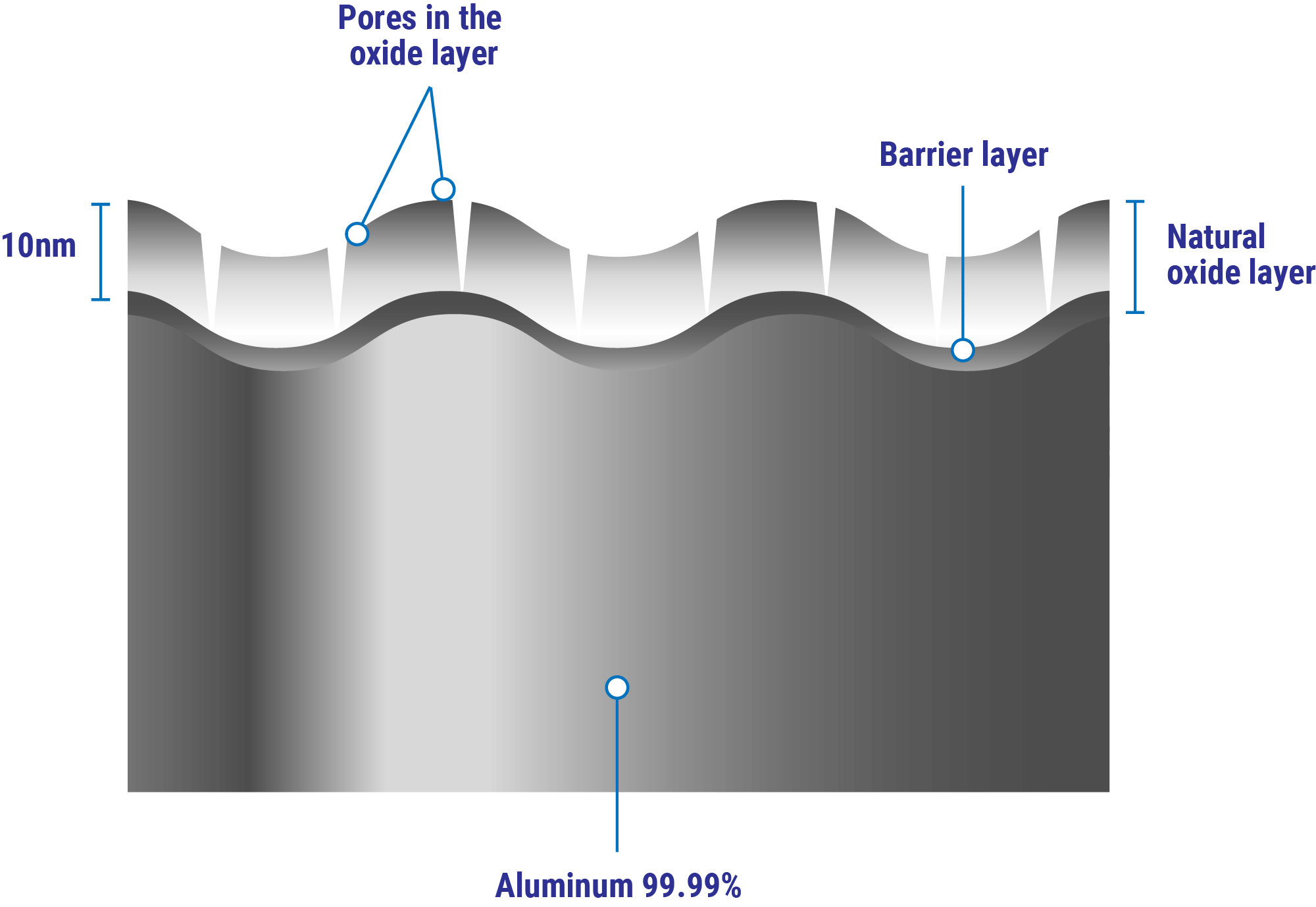The Invincibowl is designed to handle the roughest treatment, including hammering the bowl edge on hard surfaces to clear the ash that has collected after smoking. Depending upon the roughness of the surface upon which the bowl is hit, there is the potential for damage to the anodized surface. While it may not be the most visually appealing, this exposed aluminum is no cause for concern, because in actuality, there is no such thing as exposed aluminum. How can that be?
When a surface of aluminum is exposed to air by machining, abrasion or by tapping out your bowl, the oxygen molecules in the air react with the aluminum atoms on the metal’s surface to quickly form a thin layer of aluminum oxide. This hard aluminum oxide layer protects the aluminum and prevents direct contact of the pure aluminum with the environment. Air and water molecules (or any liquid for that matter) are too large to move past this tightly packed surface coating, protecting the aluminum from corrosion and erosion.
It is very easy to compare this naturally occurring protective coating with the hard anodized coating that comes on all Invincibowl products. The colored anodizing is formed when electrochemical processes convert the raw aluminum surface to an anodic oxide finish, which is simply a highly-ordered, thicker coating of pure aluminum oxide.
At a chemical level, the aluminum acquires a positive charge by transferring electrons to the oxygen atoms of a neutral O2 molecule. This results in the oxygen atoms acquiring a negative charge which makes them into oxide atoms. The negative and positive charges attract each other and an atomically bonded layer of aluminum oxide is formed on the surface. The stoichiometric ratio breaks down like this:
4 Al(s) + 3 O2 2 AL2O3 (s)

Aluminum oxide, or alumina, is an bio-inert, odorless, amorphous material that is used in a significant number of applications, including hip replacements, dental crowns and other bionic implants. Measurements of the growth of aluminum oxide on aluminum substrates have been performed at atomic levels, revealing the growth of the structures over time. This insightful and cutting-edge work shows the aluminum oxide coating forming on top of the crystalline aluminum substrate.

In short, when some of the colored coating gets removed, it is quickly replaced by a naturally occurring clear anodized coating, ensuring that pure aluminum is never exposed to the environment. With this new knowledge, you can smoke from any of our devices assured that your safety is taken care of.
You might still be worried about aluminum in general, but here again, there is no cause for concern. Aluminum is one of the most abundant metals on the surface of the earth. It can be found in trace amounts in everyday items from antacids to sunscreen and even in the food and water you ingest. There have only been loose connections made between the intake of aluminum and Alzheimer’s disease, and the studies that produced these connections were done on metal foundry workers exposed to thousands of milligrams (or more) per day over long periods of time. Significantly more than could ever be ingested by smoking out of a device that, in its entirety, is only 1600 milligrams.
For more information, check these sources:
Agency for Toxic Substances & Disease Registry, CDC
US National Library of Medicine, NIH
Understanding aspects of Aluminum Expose in Alzheimer’s Disease Development
Aluminum oxide sources:






2 comments
Excellent information here, I’m a life long machinist so am very sensitive as to what I’m smoking from.
I still think there should he a Titanium or Stainless option. I’d happily pay to steer clear of Aluminum, as it is a rather cheap alloy not really used in any high end medical applications.
Aluminum and oxygen combine, the oxygen gets a negative charge, and sticks to the aluminum, and that’s how you get aluminum oxide. This is good. Thank you.